
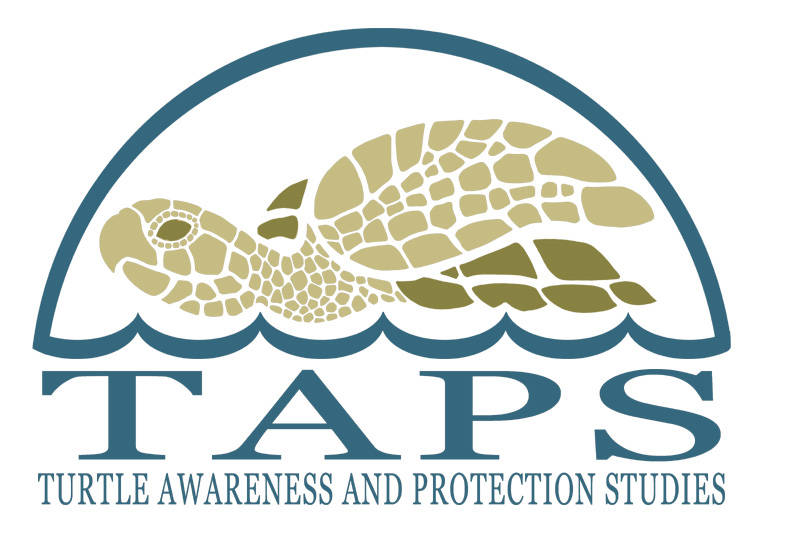
Turtle Awareness and Protection Studies (TAPS)
2009 Research Update
March 2009
Steve then went over to Roatán to continue the tagging and measuring research on juvenile hawksbills 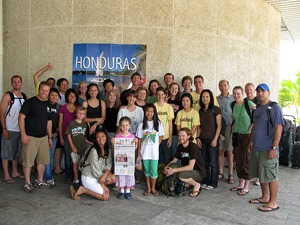 along the southeast coast of the island. After training from Steve in December, Mike Pack (the new owner of the Reef House Resort) was able to tag and release several turtles that were brought into the Reef House between December and March. While at the Reef House in March, Steve tagged and released an additional four turtles, and released five individuals back into the wild.
along the southeast coast of the island. After training from Steve in December, Mike Pack (the new owner of the Reef House Resort) was able to tag and release several turtles that were brought into the Reef House between December and March. While at the Reef House in March, Steve tagged and released an additional four turtles, and released five individuals back into the wild.
The turtle adoption program also continued with good success and through the first three months of the year, we received four requests for turtle adoptions.
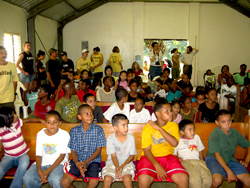
In addition to the turtle research on Roatán, ProTECTOR has been working closely with the communities of the east end of the island; the communities of Oak Ridge, Punta Gorda and Camp Bay. As part of our aim to work with communities towards sustainable development, ProTECTOR, in collaboration with CaliTan (a group from Calimesa, California) facilitated five days of health clinics in the Diamond Rock and Camp Bay communities. During that time, doctors, dentists and nurses saw over 200 community members and began a relationship with these communities that will continue through annual visits of the team to these two communities. “We don’t just want to come and give some health advice, then go on our way. We really want to develop a long-term frie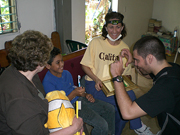 ndship with the people in these communities,” says group leader, Isaac Kim. Not only did the group provide basic health care, they also gave the school at Camp Bay a face lift, and wired the building for safe, reliable electricity. In response, the school Principal, Ms. Tammy Pandy commented, “Now we’ll finally have lights in the school and we can hold programs in the evening here.” By the end of the week with the communities, there was no doubt about the gratitude of both communities toward the group and ProTECTOR for arranging for the group to work in these remote areas.
ndship with the people in these communities,” says group leader, Isaac Kim. Not only did the group provide basic health care, they also gave the school at Camp Bay a face lift, and wired the building for safe, reliable electricity. In response, the school Principal, Ms. Tammy Pandy commented, “Now we’ll finally have lights in the school and we can hold programs in the evening here.” By the end of the week with the communities, there was no doubt about the gratitude of both communities toward the group and ProTECTOR for arranging for the group to work in these remote areas.
April – June 2009
During the first months of Spring, Melissa spent her time down at the Reef House following up her earlier sponge surveys with gastric lavages on juvenile hawksbills. The process requires the careful insertion of small-diameter, soft rubber tubes into the esophagus. Water is slowly pumped into one tube and flows out, with the stomach contents, from the other. The contents are captured in a fine mesh net and then preserved. The contents will be analyzed and compared with the distribution of sponges, algae, zooanthids, and corals that this species is reported to eat. The results of this part of Melissa’s study will be related to the home range of hawksbill juveniles in the area of Roatán.
August 2009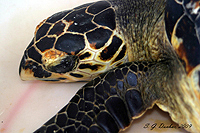
In August, Steve returned to both Roatán, and Punta Raton to continue the turtle projects underway in those communities. You can find out more about the Punta Raton project on the Pacific coast at the NBMN.
In Roatán, we planned to capture two adult hawksbills and fit them with satellite tags. Much to our disappointment however, we were unable to capture any adults in the time available to us before going to Punta Raton. We left instructions with several people in the community to capture two adults and hold them until we returned from the Pacific coast. However, even on our return and subsequent week in Roatán, we were still unable to acquire the hawksbills we 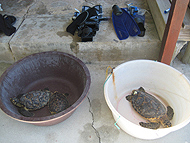 needed to fit with the satellite tags. We will continue to work with local community members in arranging the live capture of two adult hawksbills for tracking.
needed to fit with the satellite tags. We will continue to work with local community members in arranging the live capture of two adult hawksbills for tracking.
Although we weren't able to capture any adult hawksbills, we did have several juveniles brought in to the Reef House. With these we continued to tag, weigh, measure, and release.
See also link to updates on Punta Raton at NBMN.
Conch Conservation Project
In August Steve was joined by two students from Newcastle University, Bryn Davies and Timothy Heyes, who were undertaking their practical research Credits with Steve at the Reef House Resort, but they weren't working on turtles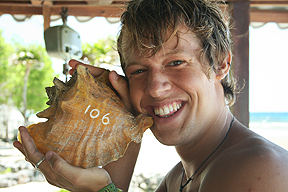 . Instead they were working on an
. Instead they were working on an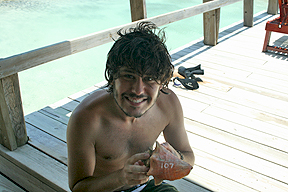 other (endangered) marine species, the Queen Conch (Strombus gigas)
other (endangered) marine species, the Queen Conch (Strombus gigas)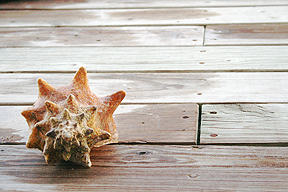 .
.
Steve is also working on a small conch conservation and restoration project initially based out of the Reef House Resort. Steve spent about one day training and working with Bryn and Tim, showing them how to weigh, measure, and number the conch. Both guys caught on very quickly and took over the project for the next week. They collected excellent data which we now have included in the conch project database.
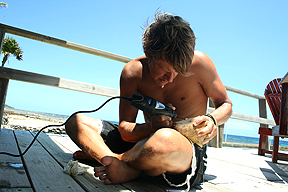

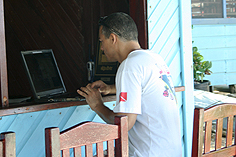
As part of the requirement for their work, both Bryn and Tim wrote full reports on their respective projects. These reports combine aspects of the scientific data collection as well as some of the social and conservation aspects of conch fisheries and conservation efforts throughout the Caribbean. Both reports can be downloaded here as PDFs: Bryn Davies' Report, Tim Heyes' Report.
October 2009
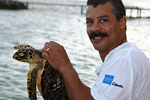
| Data Collectors |
| Bottles 2 Buildings |
| ResearchGate |
| ProTECOR Inc. Youtube |
| Interns and Volunteers |
| ProTECTOR Store |